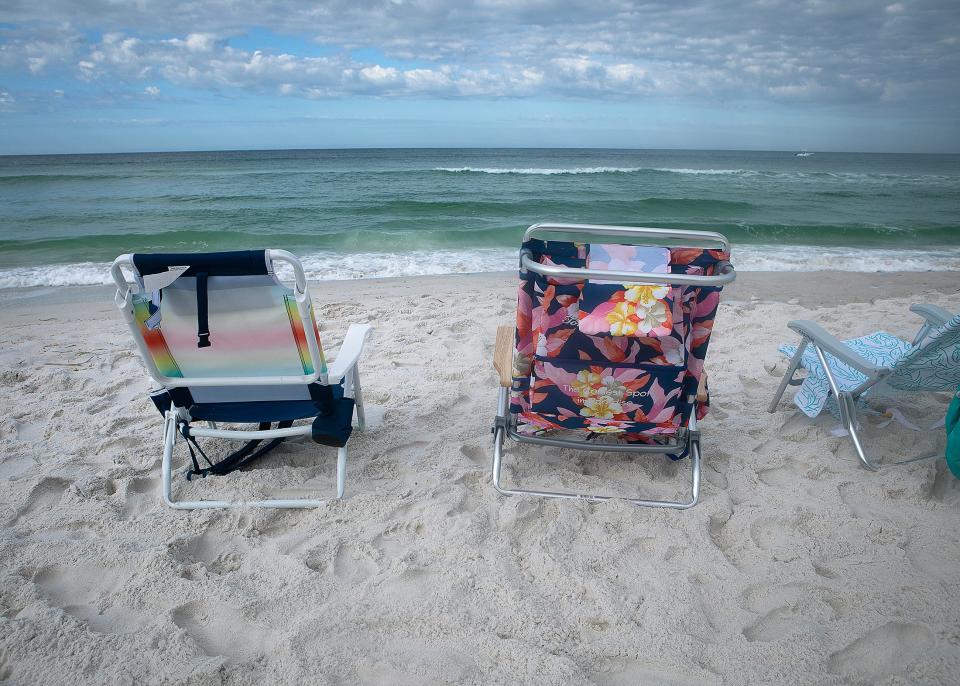Florida tourist hub has most drownings in US
The white sands and aquamarine waters of Panama City Beach make it a bustling tourist destination in the summer.
It’s also one of the most dangerous places in the nation for beachgoers because of currents that put people at risk of drowning. Local officials have issued countless warnings, but swimmers still venture out. Seven people have died this year from rip currents that pull tourists from the Florida city and the surrounding coastline into the Gulf of Mexico.
Three died at Panama City Beach and four others drowned nearby in unincorporated Bay County. Three men in their mid-20s from Birmingham, Alabama, drowned together at a beach in an unincorporated area on June 21. There were another two deaths on June 23 – a 59-year-old woman from St. Louis and a 29-year-old man whose hometown wasn't identified.
All seven were tourists who entered the Gulf during single red flag warnings. These mean that dangerous rip currents are expected and lifeguards recommend staying out of the water. This week, Panama City Beach police increased coastal patrols to prevent more people from drowning. Officials issued double red flag warnings, which prevent people from entering the water. Anyone who violates the order is subject to arrest and a $500 fine.
Rip currents kill 4 in 48 hours: Panama City Beach on pace to be deadliest in US

"The double red flag situation is extremely concerning for us," Police Chief J.R. Talamantez said. "I would rather have more officers on the sand as a presence out there to try and prevent people from drowning, than (those) officers looking for traffic infractions.”
Saturday is expected to reach the mid-90s, with heat indices making it feel like it’s well into triple digits. In a morning forecast, the National Weather Service office in Tallahassee said it will be “quite hot and muggy outside.”
Storm watch: Tropical Storm Beryl forms in Atlantic, could be hurricane by Saturday night
But that doesn’t mean tourists in areas with dangerous currents should plunge into the Gulf just yet. NWS also issued a high rip current risk through Sunday morning for all Bay and Gulf counties beaches. “Rip currents can sweep even the best swimmers away from shore into deeper water,” an NWS coastal hazard message said.
Common flag colors used in beach flag warning systems include a green flag for low-hazard conditions, a yellow flag for medium-hazard conditions, one red flag for high-hazard conditions and two red flags for very dangerous conditions. Panama City Beach and Bay County, however, never fly green flags because officials say beachgoers should always be cautious anytime they enter the Gulf.
Local officials have said beach flags in Bay County do not represent how large waves are at a given time, but indicate how strong the rip currents are.
"Waves aren't killing people here. Waves aren't the hazard," Daryl Paul, fire rescue beach safety director for Panama City Beach, told the Panama City News Herald. "It's rip currents that are the hazard, and that's what we're flying the flags for."
Last year, Panama City Beach’s rip currents drowned more people than anywhere else in the U.S., according to the National Weather Service. At least eight people died at the Gulf Coast community, making up nearly a third of Florida’s 30 deaths from rip currents. By comparison, in 2023, five people died after being swept up by currents in New Jersey. California, South Carolina and Louisiana each had three deaths.
During the summer, popular beaches carry hidden dangers: fast-moving channels can drag a swimmer away from shore and exhaust them as they try to fight their way back to safety. The National Ocean Service estimates thousands of people are rescued from rip currents each year in the U.S. About 91 people died in rip currents at U.S. beaches, according to weather service data. That was up from the 10-year average of 74 deaths per year.
The NWS recommends swimming near a lifeguard if you're at the beach. If you're caught in a rip current, it’s best to remain calm. Swim parallel to the shore, not toward it, until you’re free of the current. Then swim back to land. If you're unable to escape, face the shore and call or wave for help.
Jeanine Santucci of USA TODAY and Jim Ross of the Ocala StarBanner contributed to this story.
This article originally appeared on USA TODAY: Drownings surge at beloved Panama City Beach, due to rip tide


